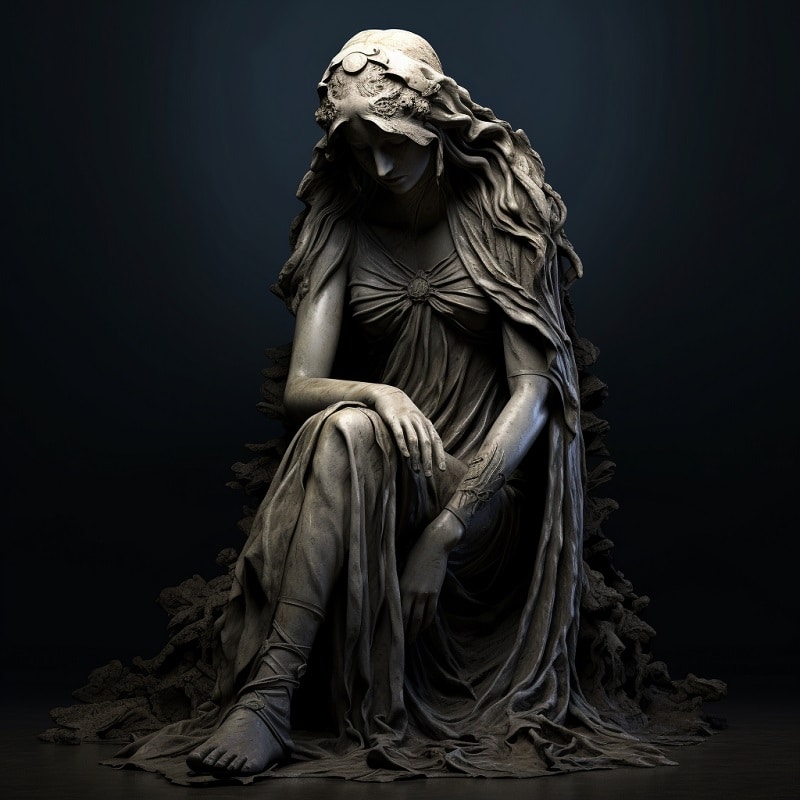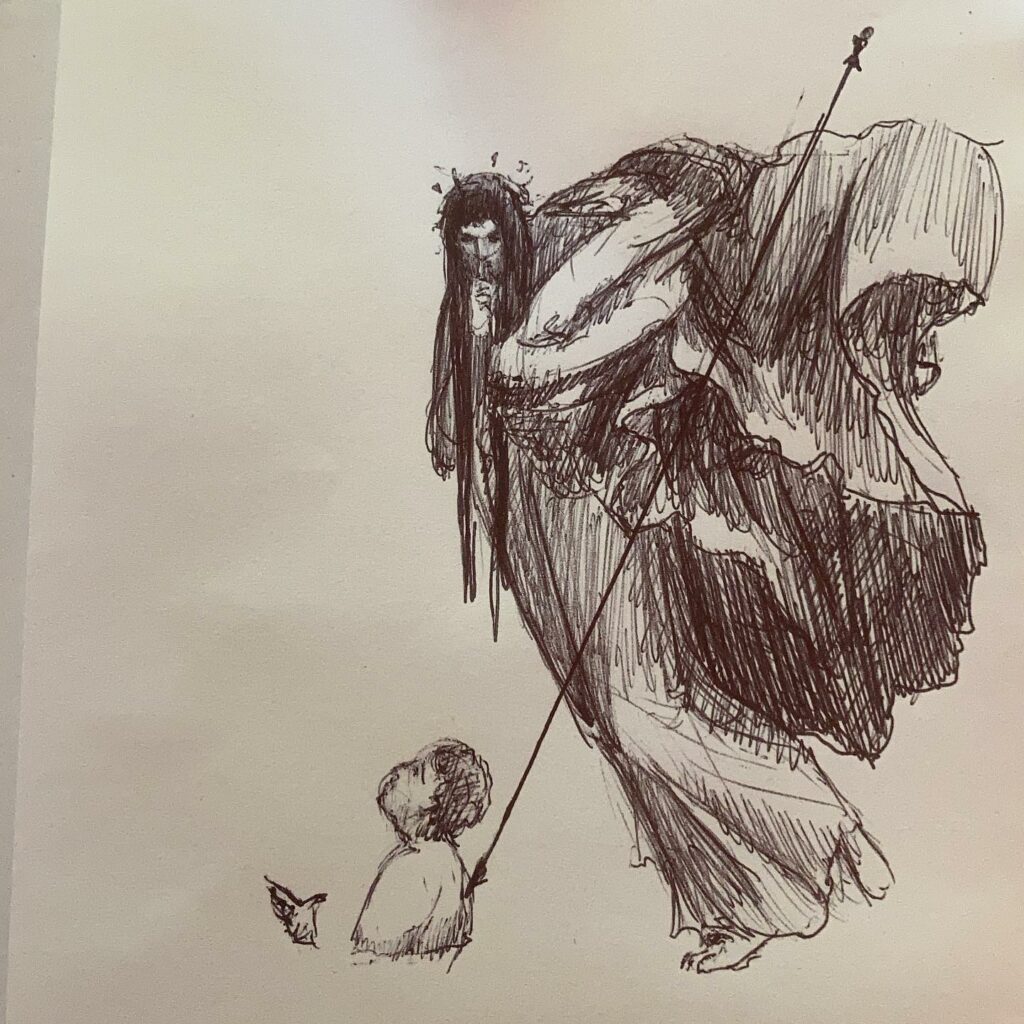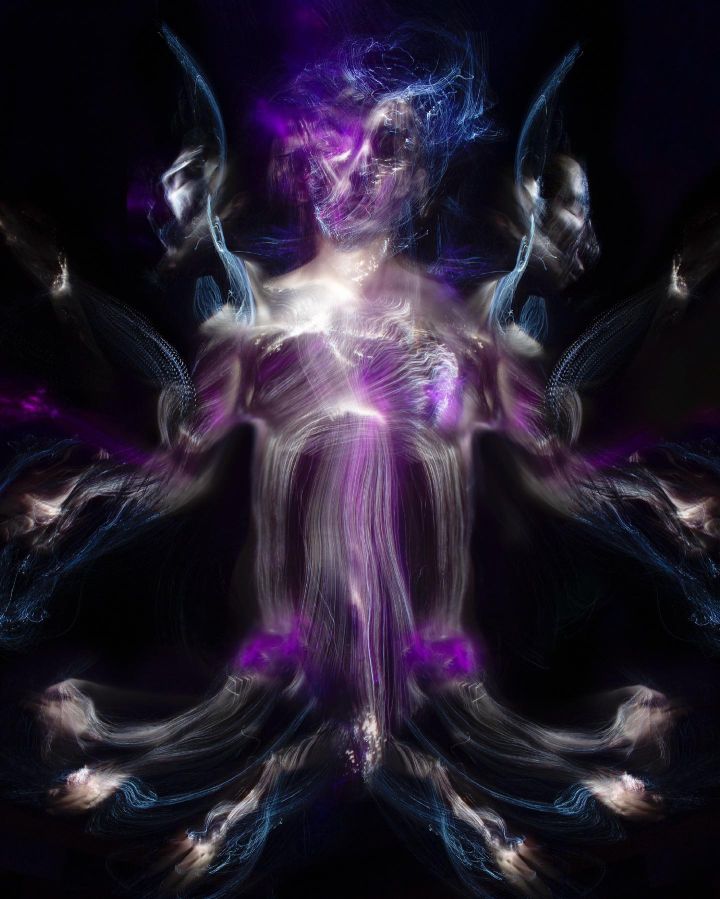I have previously written about how I have always been captivated by the shadowy aspects of certain gods in Greek mythology. While some of them, such as Nyx and Erevos, are well-known, there are also lesser-known deities who are equally fascinating.
One of my personal favorites is Oizys, the personification distress and misery. What makes Oizys so intriguing is that little is known about her, intensifying the shroud of mystery surrounding her. Let’s explore more about her story and how it resonates with the inherent suffering of the human condition.
Oizys Key Facts
| Parents | Nyx (Night) |
| Partners | None known |
| Siblings | Thanatos (Death), Hypnos (Sleep), and many others |
| Offspring | None known |
| Other names | None known |
| Roman name | Miseria |
| The God of | Misery, Distress |
| Symbols | None known |
Name and Etymology
The name Oizys has its roots in ancient Greek, where it’s synonymous with distress and misery. This nomenclature is a straightforward reflection of what she represents, a deity embodying the hardships and sorrows that are an integral part of the human experience. The Romans, with their penchant for adopting Greek deities, recognized her as Miseria, a name that carries a similar melancholic resonance.
Besides her primary name, there aren’t any notable epithets or alternative names associated with Oizys. This lack of additional monikers perhaps reflects her obscure status among the pantheon of Greek deities. Unlike her siblings Thanatos and Hypnos, who had a more pronounced presence in mythological narratives, Oizys remains a lesser-explored figure, her name echoing the singular essence of distress she embodies.
The etymological simplicity of Oizys’ name is a stark reminder of the unyielding nature of misery. It’s a term that needs no embellishment, its meaning clear and unambiguous. This straightforward nomenclature sets Oizys apart, her identity intertwined with the fundamental aspect of suffering inherent to the mortal condition.
Oizys Origins

Oizys was born to Nyx, the primordial goddess of the night, a deity often associated with ominous entities and events. Her lineage is a testament to the darker aspects of existence, with siblings like Thanatos, the personification of death, the Keres (Spirits of violent death), and Moros (Harbinger of Doom) as well as Hypnos, the deity of sleep. This familial backdrop paints a vivid picture of the somber realm Oizys hails from, a domain intertwined with the inevitable adversities of life.
There isn’t much documented about the birth or childhood of Oizys, her narrative seemingly overshadowed by the more prominent figures of Greek mythology. However, her existence as a personification, rather than a deity with a human-like persona, suggests a timeless presence. Oizys embodies an aspect of life that is as ancient and enduring as the gods themselves, her essence woven into the very fabric of human experience.
As a Daemone, or spirit, Oizys represents a fundamental aspect of human existence. Her role in Greek mythology isn’t about adventures or rivalries, but rather a reflection on the inherent nature of misery and distress. Through her, the ancient Greeks acknowledged the unavoidable adversities that punctuate the human journey, offering a somber yet profound exploration of life’s darker shades.
Oizys Lovers and Relationships
Oizys, being the personification of misery, doesn’t have a documented romantic narrative. Her essence, steeped in sorrow and distress, doesn’t lend itself to the romantic escapades typical of other Greek deities. This lack of romantic entanglements further accentuates the solitary and somber nature of her existence.
Oizys Offspring
Similarly, there are no known offspring of Oizys. Her narrative is devoid of the familial extensions seen in the lives of other gods and goddesses. This absence of progeny is in line with her solitary personification of misery, a stark contrast to the often complex and intertwined familial relations among the Greek pantheon.
Depiction and Characteristics
Oizys, though not as vividly depicted as some other deities, holds a unique place in Greek mythology. Her visual representations are scarce, often showing her as a gaunt, forlorn figure embodying the essence of misery. Unlike other deities, she doesn’t come with a set of recognizable symbols or creatures, making her a solitary figure in the vast pantheon.
Appearance and Personality
The few artistic renditions available portray Oizys with a demeanor of desolation and sorrow. Her form exudes an aura of melancholy, starkly contrasting the powerful and divine attributes often associated with other Greek deities. This lack of personal characterization sets her apart, her identity solely focused on the concept of misery.
Powers and Symbols
Oizys’ powers are subtle, representing the inevitable hardships that accompany life. Unlike other deities, her influence isn’t about divine interventions or grandiose displays of strength. Instead, it’s a constant, subtle reminder of life’s trials and tribulations. The absence of tangible symbols or associations underscores the unyielding, abstract nature of the distress she embodies, inviting a deeper exploration into the philosophical nature of her existence.
Oizys Roles And Responsibilities
Oizys’ role in Greek mythology is a profound one, though not marked by grandiose tales or divine interventions. Her essence as the personification of misery serves as a somber reminder of life’s inherent adversities. Through her, the ancient Greeks explored the darker shades of existence, acknowledging the inevitable hardships that punctuate the human journey.
Her responsibilities, unlike those of other deities, aren’t about overseeing realms or intervening in mortal affairs. Instead, Oizys embodies the abstract concept of distress, her presence a constant, subtle reminder of life’s trials and tribulations. This role, though not as celebrated or feared, holds a mirror to the human condition, offering a unique perspective on the challenges inherent to existence.
The narrative of Oizys invites contemplation on the nature of suffering and the human experience. It’s a somber exploration that delves into the philosophical, offering a profound, albeit melancholy, reflection on life’s inevitable adversities.
Myths about Oizys
The myths surrounding Oizys are sparse, her narrative largely overshadowed by the more prominent figures of Greek mythology.
Oizys and the Human Condition

One of the subtle yet profound narratives surrounding Oizys delves into her essence as the personification of misery. Through her, the ancient Greeks explored the concept of suffering, acknowledging the inevitable adversities that accompany the human journey. This narrative, though not as vividly chronicled as others, offers a unique perspective on the darker shades of existence.
The portrayal of Oizys in this narrative is a somber one, her essence intertwined with the very fabric of hardship and sorrow that pervades the mortal realm. It’s a tale that invites contemplation on the nature of suffering, offering a profound, albeit melancholy, reflection on the human condition.
The narrative of Oizys and the human condition is a philosophical exploration, a somber reflection on the inevitable adversities of life. It’s a tale that delves into the abstract, offering a unique perspective on the challenges inherent to the mortal journey.
Oizys In Ancient Greek Religion
There aren’t any known temples or sacred sites dedicated to Oizys. Her obscure status among the Greek pantheon reflects in the lack of architectural or archaeological evidence of worship. This absence of tangible remnants further accentuates the abstract nature of her narrative, her essence solely centered around the concept of misery.
The lack of dedicated temples or sacred sites underscores the philosophical nature of Oizys’ narrative. Unlike other deities who were celebrated or feared through tangible expressions of worship, Oizys remains a more abstract, contemplative figure.
This absence of physical remnants invites a deeper exploration of Oizys’ essence, a narrative that delves into the philosophical rather than the tangible. It’s a somber reflection on the inherent adversities of life, a unique perspective on the human condition.
Representations in Art

The visual representations of Oizys in ancient art are scarce. Her obscure status among the Greek pantheon reflects in the lack of artistic renditions dedicated to her. Unlike other deities who were celebrated or feared through various forms of art, she remains a lesser-explored figure, her narrative largely overshadowed by the more prominent figures of Greek mythology.
However, the few depictions available offer a somber reflection on the essence of misery she embodies. Her form, often portrayed as gaunt and forlorn, is a stark reminder of life’s inherent adversities. These visual renditions, though sparse, provide a glimpse into the melancholy aura that surrounds Oizys, her narrative inviting contemplation on the darker shades of existence.
Mentions in Ancient Texts
The mentions of Oizys in ancient texts, though sparse, provide a glimpse into her essence as the personification of misery. These brief references invite contemplation on the darker shades of existence, offering a unique perspective on the human condition.
Hesiod’s “Theogony” (circa 700 BC)
Hesiod, a revered ancient Greek poet often considered a contemporary of Homer, penned “Theogony” around 700 BC. This seminal work delves into the origins and genealogies of the Greek gods. In “Theogony,” Hesiod lists Oizys among the progeny of Nyx, showcasing her as a symbol of misery. He writes:
“And Nyx (Night) bore hateful Moros (Doom) and black Ker (Violent Death) and Thanatos (Death), and she bore Hypnos (Sleep) and the tribe of Oneiroi (Dreams). And again the goddess murky Night, though she lay with none, bare Momos (Blame) and painful Oizys (Misery), and the Hesperides …”
Homer’s “Iliad” (circa 762 BC)
Homer, an iconic figure in ancient Greek literature, authored the “Iliad” around 762 BC. Although Oizys isn’t directly mentioned, the essence of misery and distress, which she personifies, pervades the narrative. The harsh realities of war and the human suffering depicted in the “Iliad” resonate with the somber essence of Oizys.
Aristophanes’ “Plutus” (388 BC)
Aristophanes, a prolific ancient Greek playwright known for his comedic takes on political and social issues, mentions Oizys in his play “Plutus” written in 388 BC. Through his characters, Aristophanes explores the concept of wealth and poverty, touching upon the essence of misery that Oizys embodies. In a dialogue, he mentions her as a figure of distress, showcasing the pervasive nature of hardship in human life.
Frequently Asked Questions
Oizys is the daughter of Nyx, the primordial goddess of the night.
She represents misery and distress, embodying the inherent adversities of the human condition.
There are no known lovers or offspring of Oizys.
Oizys is often depicted as a gaunt, forlorn figure, embodying the essence of misery.
There aren’t any known temples or sacred sites dedicated to Oizys.
Oizys is mentioned in Hesiod’s “Theogony,” where she is listed among the progeny of Nyx.
Featured Image Credit: Midjourney
